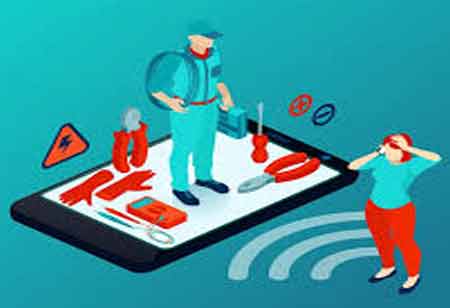Thank you for Subscribing to Electrical Business Review Weekly Brief
I agree We use cookies on this website to enhance your user experience. By clicking any link on this page you are giving your consent for us to set cookies. More info
Innovations in Electrical Testing: Pioneering Safety Solutions
Advances in technology and safety mechanisms, aided by government regulations, make electrical testing highly innovative and, thus, more reliable and safe.

By
Electrical Business Review | Monday, September 15, 2025
Stay ahead of the industry with exclusive feature stories on the top companies, expert insights and the latest news delivered straight to your inbox. Subscribe today.
Fremont, CA: Technological advancements have accelerated the development of new electrical testing methodologies and instruments, improving functionality, preventing accidents, and ensuring regulatory compliance in residential and industrial settings, thereby enhancing safety and dependability.
The advancement in electrical testing through smart testing devices has enabled real-time data and detailed reports. These devices can properly and accurately test insulation resistance, continuity, and earth ground with digital interfaces, data logging, and reporting features. Such data provides insight for engineers to recognize trends regarding potential problems ahead, thus leading to better maintenance and upgrade decisions that are more precise and effective.
The new electrical testing has to do more with the wireless technology to allow one to monitor and collect data while remaining at a site. It is mainly used in hazardous environments for safety. Wireless technology enables the continuous monitoring of electrical systems, where abnormalities or potential failures are alerted instantaneously, improving system reliability and enabling proactive maintenance, which will, in turn, reduce downtime and costs incurred by it.
The Internet of Things (IoT) has also brought about a revolution in electrical testing. IoT-capable devices can all communicate with each other, share data over the internet, and build a network of electricity equipment in a connected state. This connection opens advanced analytics and predictive maintenance avenues through electrical testing data with other operational data for better performance. For example, data from sensors can be analyzed to enable businesses to identify inefficiencies, track how their equipment is working, and make decisions based on enhanced data reliability and safety. The IoT approach not only improves operational efficiency but also prevents unexpected failures.
Electrical testing has safety as the most critical consideration. Advancements in testing have been developed to enhance safety protocols. Another invention is insulation resistance testing, which checks electrical insulation quality to help indicate before a fault happens. Today, insulation testers are equipped with different voltages, and the insulation assessment can be very comprehensive. With their capability of identifying weak points in electrical insulation, tech technicians can make corrections for dents, fires, or other damages due to that failure.
Not only has equipment been improved, but training and education have also been improved within the electrical testing industry. Technology advances require the right workers to appropriately use modern, advanced testing tools. Many organizations are investing in programs about the latest technologies, safety protocols, and best practices in electrical testing. Proper and safe testing of electrical systems is ensured by equipping technicians with the knowledge and skills to operate modern equipment.
Regulatory authorities will still stress electrical testing as most will see that all workplaces comply with safety standards. Indeed, most countries have emphasized regular electrical system testing and maintenance in new regulations. These laws mainly ensure protection for the employees and the consumers. Still, pressure firms are also pressured to become more innovative with a proper testing operation, improving overall safety and reliability.








